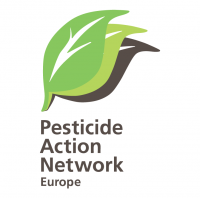One third of the food consumed in Europe contains residues of two or more pesticides, according to the annual report published by the European Food Safety Authority (EFSA). For certain foods the situation is even worse, since over 65% of the popular summer fruits tested (currants, strawberries and grapes) were found to contain pesticide “cocktails”.
PAN Europe stresses that Regulators must stop downplaying the effects of pesticide mixtures and urgently address the impact of these cocktails on consumers’ health.
For fifteen years, European legislation[1] has required to address the cumulative and synergistic effects of pesticides in safety assessment as several pesticides are used in agricultural fields and end up as residues in food, yet a protocol to manage mixture risks remains to be developed. “Regulators continue to carry out the safety assessments as if humans were exposed to a single pesticide - which, according to EFSA’s annual report, is not the case” commented Angeliki Lysimachou, Science Policy Officer at PAN Europe.
The new EFSA report, which is based mainly on fruit and vegetable samples collected in 2018 across all EU Member States, reconfirms the worrying results from previous years: just over half (52.2%) of the food tested was free of detectable pesticide residues, whereas almost one third (29.1 %) contained 2 or more pesticide residues, an increase from last year (Fig. 1 and 2). For some common products the situation is much worse: 75.6% of currants and blackberries, and over 65% of table grapes, strawberries, cherries and pears were found to have two or more pesticide residues. In one exceptional case an individual goji berry sample from China contained 29 different pesticide residues.
For decades, scientists have been raising the alarm that chemical mixtures may magnify the toxic potential of individual chemical substances alone, including pesticides, making the safety assessment of “one chemical, one assessment” unfit to guarantee consumers’ safety. Furthermore, persistent and highly toxic pesticides (e.g. chlordecone, hexaclorobenzene) that have already been banned continue to be present in our food, establishing a continuous background exposure level to toxic chemicals and making the public more vulnerable to additional exposures.
Consumption of food high in pesticide residues has been linked to reduced fertility rates in women and sperm quality in men. Moreover, some of the pesticides found in EU food have endocrine disrupting properties and should be banned according to EU law[2]. For example, Boscalid, an endocrine disrupting fungicide according to the Commission’s 2016 impact assessment, is among the top 5 synthetic pesticides detected. Dithiocarbamates, the group of highly toxic fungicides (including the identified endocrine disruptor Mancozeb, which is still on the market), are also at the top of the list. Glyphosate, the active ingredient of Bayer-Monsanto’s Roundup which is classified as a probable carcinogen by the International Agency for Research on Cancer, was most often detected in lentils (27%), beans (18%) and rice (12.7%), and exceeded the safety limits in honey.
Lysimachou added: “In a time where reducing pesticide dependency is a political priority, regulators have to stop pretending that pesticide cocktails are safe. An additional safety factor for mixtures must urgently be placed in the pesticide safety assessment, which will inevitably reduce what levels of pesticide residues in food are considered safe”.

Figure 1. In 2018 the percentage of vegetables and fruit in European shops without detectable pesticide residues (below analytical detection limit) decreased to 52.2%. Close to half of the total fruit and vegetables are contaminated with one or more pesticide residues.

Figure 2. In 2018 the percentage of multiple residues in vegetables and fruit consumed in Europe increased to a higher rate of 29.1 %
Contact: Angeliki Lysimachou, angeliki [at] pan-europe.info, +32 496 392930
[1] OJ L 70, 16.3.2005. Regulation (EC) No 396/2005 on maximum residue levels of pesticides in/on food and feed
[2] OJ L 309, 24.11.2009. Regulation (EC) 1107/2009 concerning the placing of plant protection products on the market. Annex II 3.6.5 and 3.8.2
